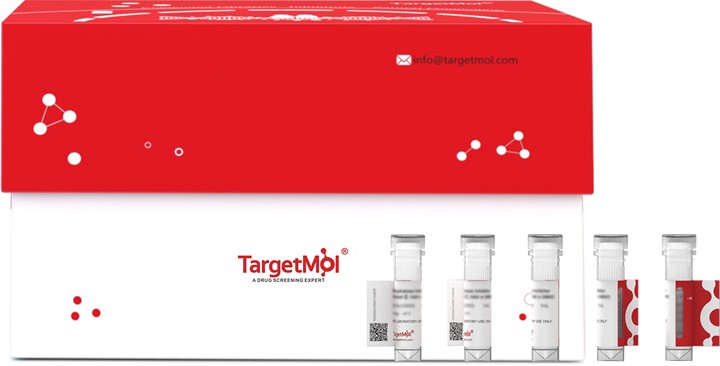 Your shopping cart is currently empty
Your shopping cart is currently empty
LR3-IGF-1 Protein, Mouse, Recombinant (His)
Insulin-like growth factor I (IGF1) belongs to the family of insulin-like growth factors that are structurally homologous to proinsulin. Mouse IGF-I is synthesized as two precursor isoforms with alternate N- and C-terminal propeptides. These isoforms are differentially expressed by various tissues. Mature mouse IGF-I shares 94% and 99% aa sequence identity with human and rat IGF-I, respectively, and exhibits cross-species activity. It shares 60% aa sequence identity with mature mouse IGF-II. IGF-I induces the proliferation, migration, and differentiation of a wide variety of cell types during development and postnatally. It plays an important role in muscle regeneration and tumor progression. IGF-I binds IGF-I R, IGF-II R, and the insulin receptor. IGF-I association with IGF binding proteins increases its plasma half-life and modulates its interactions with receptors.

LR3-IGF-1 Protein, Mouse, Recombinant (His)
| Pack Size | Price | USA Warehouse | Global Warehouse | Quantity |
|---|---|---|---|---|
| 10 μg | $35 | 7-10 days | 7-10 days | |
| 20 μg | $44 | 7-10 days | 7-10 days | |
| 50 μg | $60 | 7-10 days | 7-10 days | |
| 100 μg | $116 | 7-10 days | 7-10 days | |
| 1 mg | $869 | 7-10 days | 7-10 days |
Product Information
| Biological Activity | Activity has not been tested. It is theoretically active, but we cannot guarantee it. If you require protein activity, we recommend choosing the eukaryotic expression version first. |
| Description | Insulin-like growth factor I (IGF1) belongs to the family of insulin-like growth factors that are structurally homologous to proinsulin. Mouse IGF-I is synthesized as two precursor isoforms with alternate N- and C-terminal propeptides. These isoforms are differentially expressed by various tissues. Mature mouse IGF-I shares 94% and 99% aa sequence identity with human and rat IGF-I, respectively, and exhibits cross-species activity. It shares 60% aa sequence identity with mature mouse IGF-II. IGF-I induces the proliferation, migration, and differentiation of a wide variety of cell types during development and postnatally. It plays an important role in muscle regeneration and tumor progression. IGF-I binds IGF-I R, IGF-II R, and the insulin receptor. IGF-I association with IGF binding proteins increases its plasma half-life and modulates its interactions with receptors. |
| Species | Mouse |
| Expression System | E. coli |
| Tag | C-6xHis |
| Accession Number | P05017 |
| Synonyms | somatomedin-C,Somatomedin C,Insulin-like growth factor I,insulin-like growth factor 1,IGF-1,IGF1 |
| Amino Acid | Gly49-Ala118 |
| Construction | Gly49-Ala118 |
| Protein Purity | Greater than 95% as determined by reducing SDS-PAGE. (QC verified) |
| Molecular Weight | 12 KDa (reducing condition) |
| Endotoxin | < 0.1 ng/µg (1 EU/µg) as determined by LAL test. |
| Formulation | Lyophilized from a solution filtered through a 0.22 μm filter, containing 20 mM NaAc, pH 4.5. |
| Reconstitution | Reconstitute the lyophilized protein in distilled water. The product concentration should not be less than 100 μg/ml. Before opening, centrifuge the tube to collect powder at the bottom. After adding the reconstitution buffer, avoid vortexing or pipetting for mixing. |
| Stability & Storage | Lyophilized powders can be stably stored for over 12 months, while liquid products can be stored for 6-12 months at -80°C. For reconstituted protein solutions, the solution can be stored at -20°C to -80°C for at least 3 months. Please avoid multiple freeze-thaw cycles and store products in aliquots. |
| Shipping | In general, Lyophilized powders are shipping with blue ice. Solutions are shipping with dry ice. |
| Research Background | Insulin-like growth factor I (IGF1) belongs to the family of insulin-like growth factors that are structurally homologous to proinsulin. Mouse IGF-I is synthesized as two precursor isoforms with alternate N- and C-terminal propeptides. These isoforms are differentially expressed by various tissues. Mature mouse IGF-I shares 94% and 99% aa sequence identity with human and rat IGF-I, respectively, and exhibits cross-species activity. It shares 60% aa sequence identity with mature mouse IGF-II. IGF-I induces the proliferation, migration, and differentiation of a wide variety of cell types during development and postnatally. It plays an important role in muscle regeneration and tumor progression. IGF-I binds IGF-I R, IGF-II R, and the insulin receptor. IGF-I association with IGF binding proteins increases its plasma half-life and modulates its interactions with receptors. |
Dose Conversion
Calculator
Tech Support
Keywords
| Size | Quantity | Unit Price | Amount | Operation |
|---|

Copyright © 2015-2025 TargetMol Chemicals Inc. All Rights Reserved.



